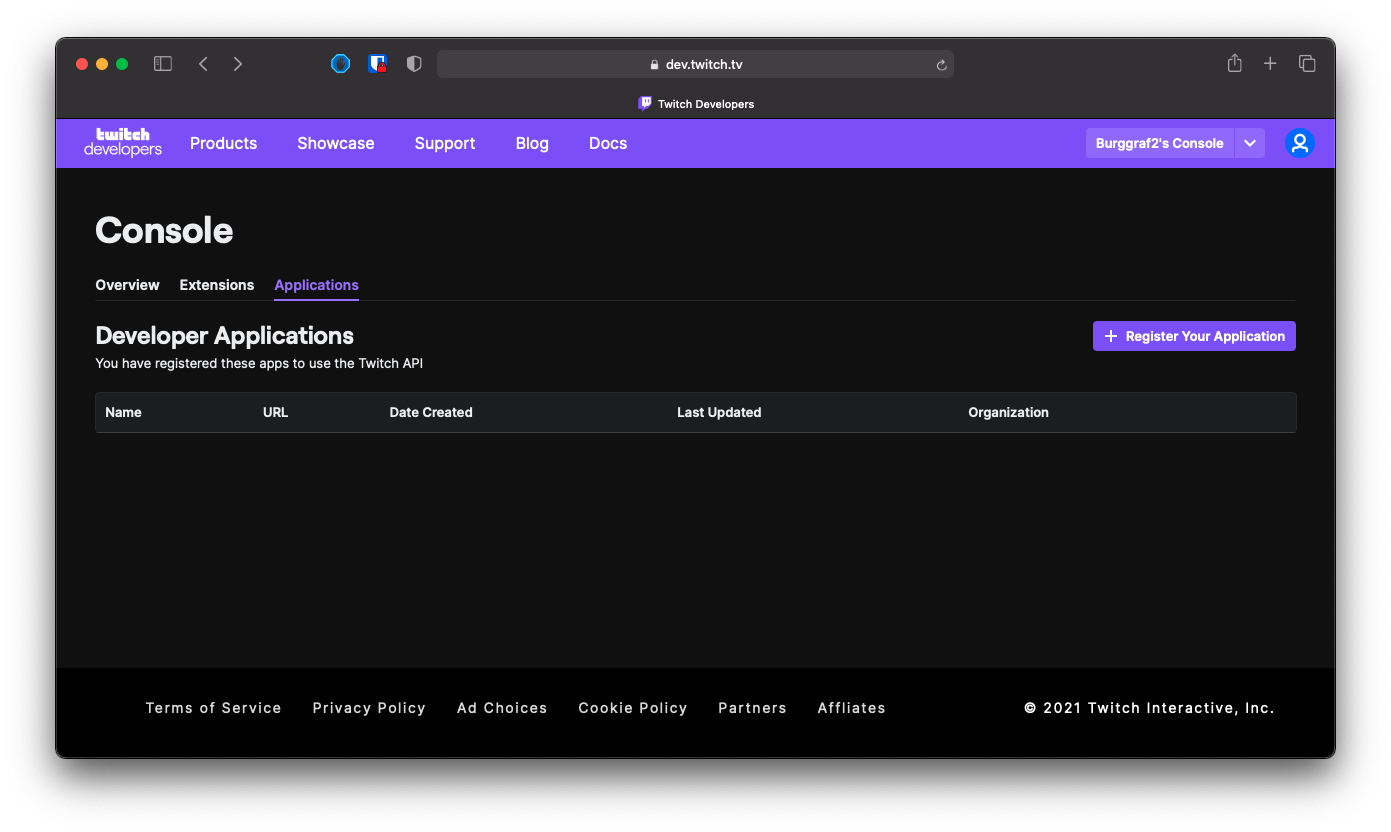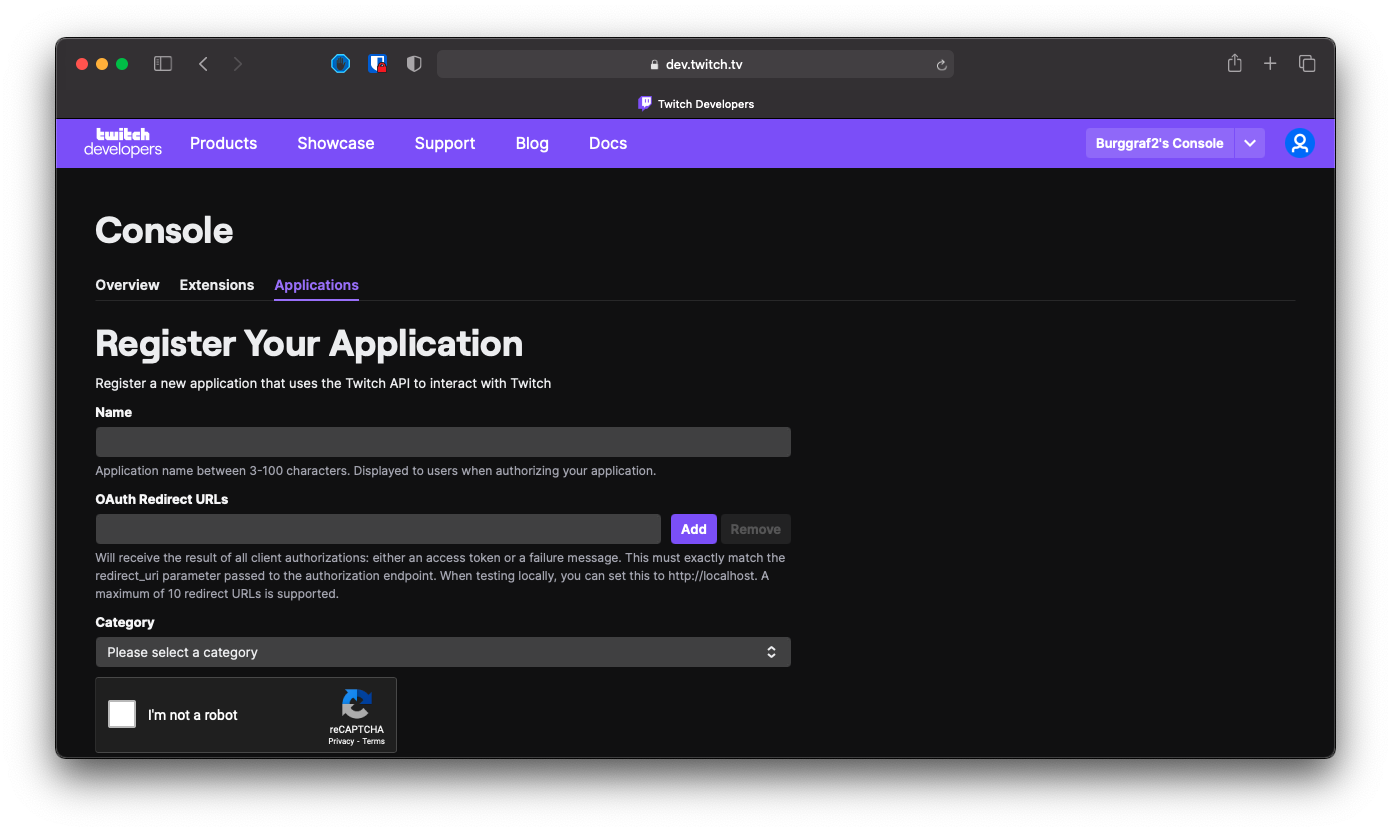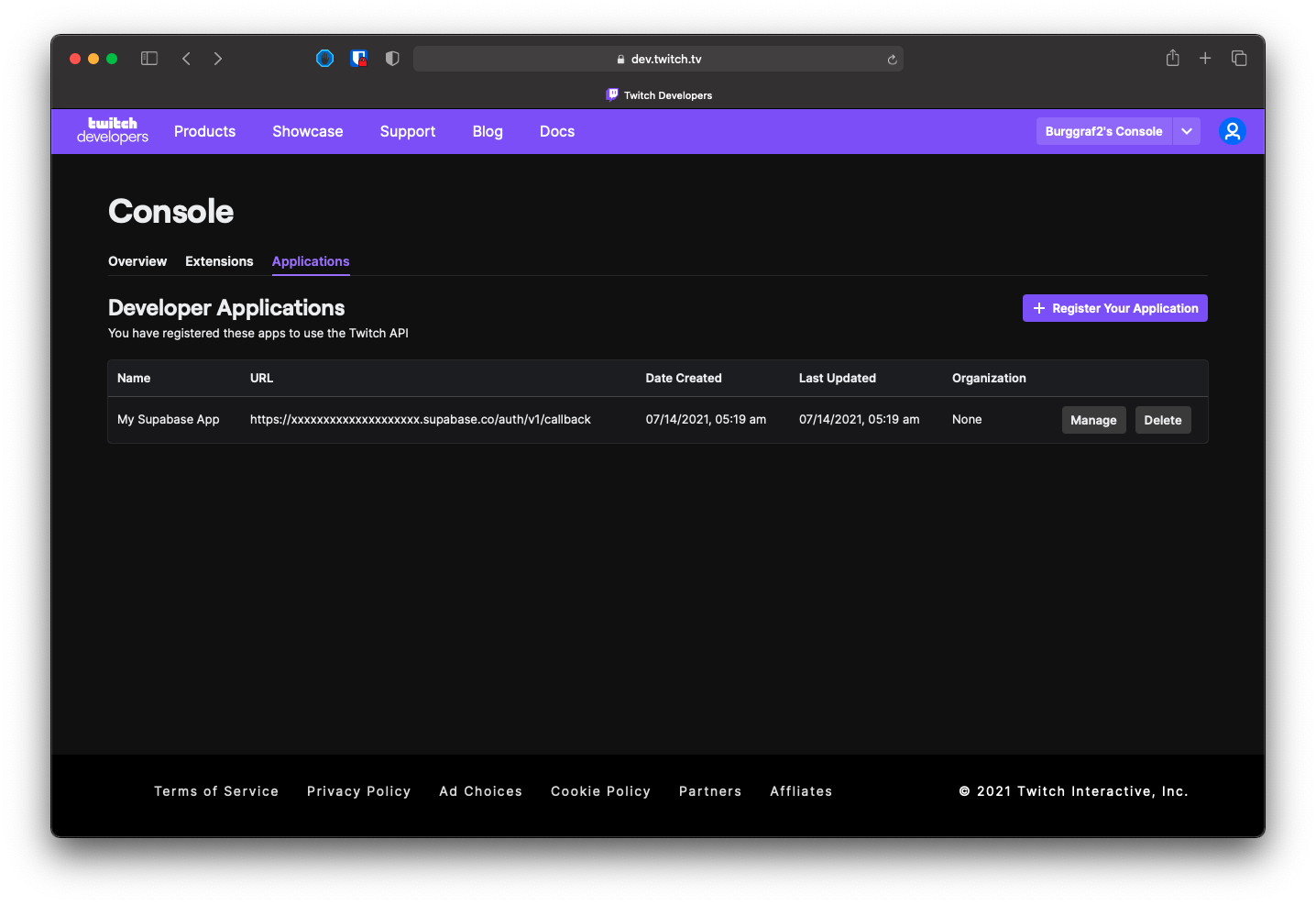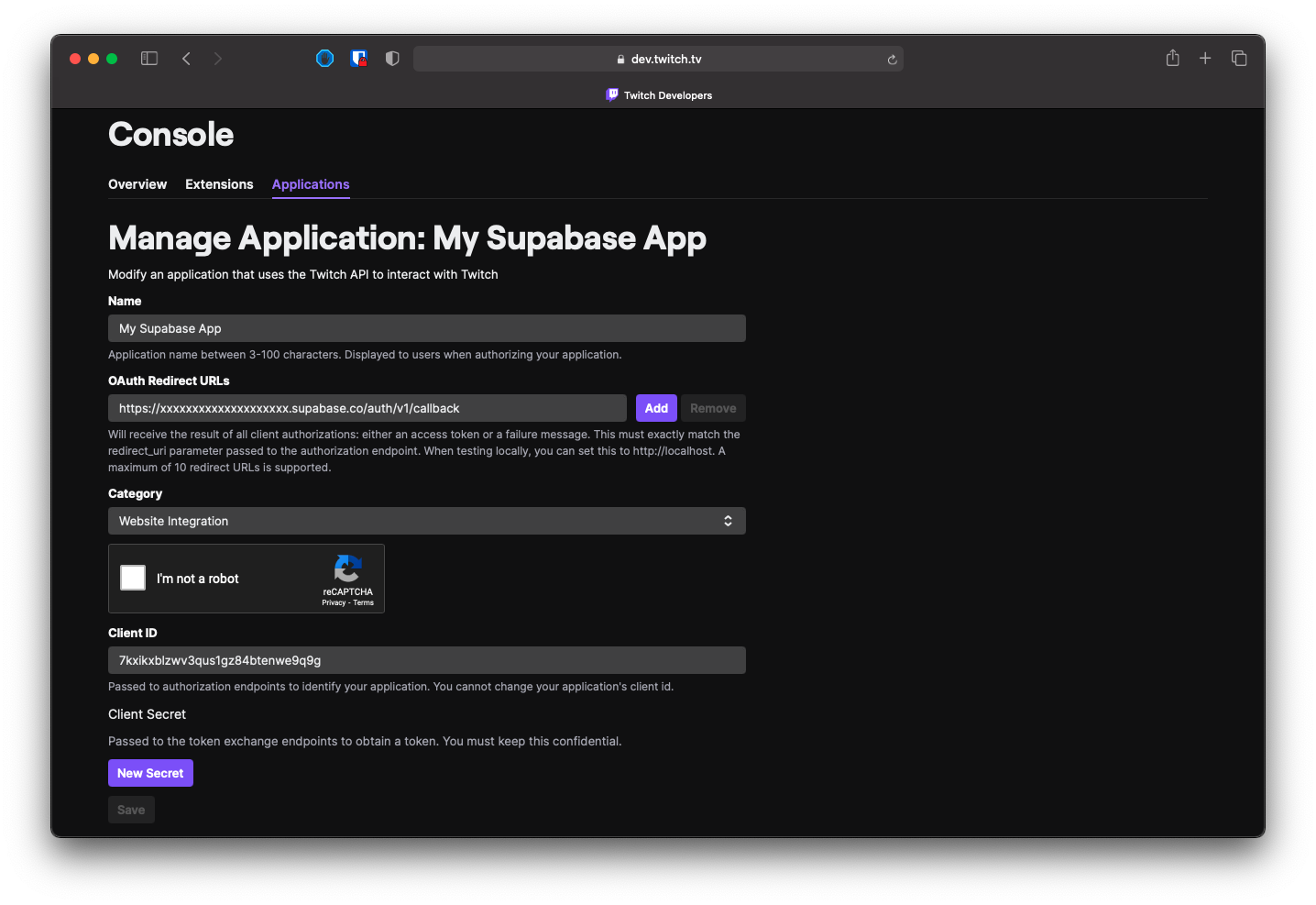Login with Twitch
To enable Twitch Auth for your project, you need to set up a Twitch Application and add the Application OAuth credentials to your Supabase Dashboard.
Overview
Setting up Twitch logins for your application consists of 3 parts:
- Create and configure a Twitch Application Twitch Developer Console
- Add your Twitch OAuth Consumer keys to your Supabase Project
- Add the login code to your Supabase JS Client App
Access your Twitch Developer account
- Go to dev.twitch.tv.
- Click on
Log in with Twitchat the top right to log in. - If you have not already enabled 2-Factor Authentication for your Twitch Account, you will need to do that at Twitch Security Settings before you can continue.

- Once logged in, go to the Twitch Developer Console.

Find your callback URL
The next step requires a callback URL, which looks like this: https://<project-ref>.supabase.co/auth/v1/callback
- Go to your Supabase Project Dashboard
- Click on the
Authenticationicon in the left sidebar - Click on
Providersunder the Configuration section - Click on Twitch from the accordion list to expand and you'll find your Callback URL, you can click
Copyto copy it to the clipboard
For testing OAuth locally with the Supabase CLI see the local development docs.
Create a Twitch application

- Click on
+ Register Your Applicationat the top right.

- Enter the name of your application.
- Type or paste your
OAuth Redirect URL(the callback URL from the previous step.) - Select a category for your app.
- Check the CAPTCHA box and click
Create.
Retrieve your Twitch OAuth client ID and client secret
- Click
Manageat the right of your application entry in the list.

- Copy your Client ID.
- Click
New Secretto create a new Client Secret. - Copy your Client Secret.

Add your Twitch credentials into your Supabase project
- Go to your Supabase Project Dashboard
- In the left sidebar, click the
Authenticationicon (near the top) - Click on
Providersunder the Configuration section - Click on Twitch from the accordion list to expand and turn Twitch Enabled to ON
- Enter your Twitch Client ID and Twitch Client Secret saved in the previous step
- Click
Save
Add login code to your client app
Make sure you're using the right supabase client in the following code.
If you're not using Server-Side Rendering or cookie-based Auth, you can directly use the createClient from @supabase/supabase-js. If you're using Server-Side Rendering, see the Server-Side Auth guide for instructions on creating your Supabase client.
When your user signs in, call signInWithOAuth() with twitch as the provider:
12345async function () { const { , } = await ..({ : 'twitch', })}For a PKCE flow, for example in Server-Side Auth, you need an extra step to handle the code exchange. When calling signInWithOAuth, provide a redirectTo URL which points to a callback route. This redirect URL should be added to your redirect allow list.
In the browser, signInWithOAuth automatically redirects to the OAuth provider's authentication endpoint, which then redirects to your endpoint.
123456await ..({ , : { : `http://example.com/auth/callback`, },})At the callback endpoint, handle the code exchange to save the user session.
Create a new file at app/auth/callback/route.ts and populate with the following:
app/auth/callback/route.ts
12345678910111213141516171819202122232425262728293031323334import { NextResponse } from 'next/server'// The client you created from the Server-Side Auth instructionsimport { createClient } from '@/utils/supabase/server'export async function GET(request: Request) { const { searchParams, origin } = new URL(request.url) const code = searchParams.get('code') // if "next" is in param, use it as the redirect URL let next = searchParams.get('next') ?? '/' if (!next.startsWith('/')) { // if "next" is not a relative URL, use the default next = '/' } if (code) { const supabase = await createClient() const { error } = await supabase.auth.exchangeCodeForSession(code) if (!error) { const forwardedHost = request.headers.get('x-forwarded-host') // original origin before load balancer const isLocalEnv = process.env.NODE_ENV === 'development' if (isLocalEnv) { // we can be sure that there is no load balancer in between, so no need to watch for X-Forwarded-Host return NextResponse.redirect(`${origin}${next}`) } else if (forwardedHost) { return NextResponse.redirect(`https://${forwardedHost}${next}`) } else { return NextResponse.redirect(`${origin}${next}`) } } } // return the user to an error page with instructions return NextResponse.redirect(`${origin}/auth/auth-code-error`)}When your user signs out, call signOut() to remove them from the browser session and any objects from localStorage:
123async function () { const { } = await ..()}